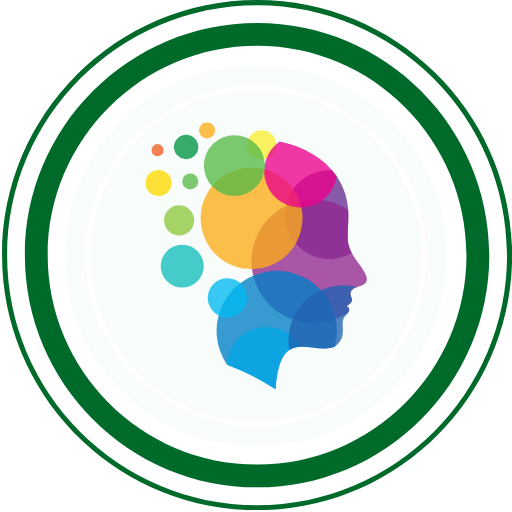Becoming a Fullstack QA engineer requires a comprehensive skill set and familiarity with a wide range of tools. In this blog post, we’ll explore the 50 essential skills and tools that every aspiring Fullstack QA engineer should master to excel in their role.
1. Understanding of Software Development Lifecycle (SDLC)
Comprehensive knowledge of the stages involved in developing software, from planning to deployment and maintenance, is crucial.
2. Proficiency in Manual Testing
The ability to perform testing manually without automation tools to identify defects effectively.
3. Automation Testing Skills
Capability to use tools and scripts to automate testing processes, improving efficiency and coverage.
4. Knowledge of Frontend Technologies
Understanding of HTML, CSS, JavaScript, and frontend frameworks like React, Angular, and Vue.js to test user interfaces effectively.
5. Knowledge of Backend Technologies
Familiarity with server-side languages (e.g., Java, Python, Node.js) and databases (e.g., MySQL, PostgreSQL) to test backend functionality and integrations.
6. Database Testing Skills
Proficiency in validating database operations, including data integrity and performance.
7. API Testing and Automation
Ability to test APIs for functionality, reliability, performance, and security using tools like Postman, SoapUI, and RestAssured.
8. Performance and Load Testing
Skills to assess the performance of applications under various conditions using tools like JMeter, LoadRunner, and Gatling.
9. Security Testing
Ensuring applications are secure from vulnerabilities and threats using methods like penetration testing with tools like OWASP ZAP and Burp Suite.
10. Continuous Integration/Continuous Deployment (CI/CD) Practices
Knowledge of automated build, test, and deployment pipelines using tools like Jenkins, GitLab CI, and CircleCI to ensure continuous delivery.
11. Familiarity with Testing Tools (e.g., Selenium, JUnit, TestNG)
Proficiency in using tools that facilitate various testing types and stages.
12. Version Control Systems (e.g., Git, SVN)
Understanding of version control systems to manage code changes and collaborate with teams.
13. Understanding of Testing Frameworks (e.g., pytest, JUnit, Cucumber)
Ability to implement and utilize testing frameworks for automated tests.
14. Proficiency in Programming Languages (e.g., Python, Java, JavaScript, Ruby)
Coding skills necessary to write tests and understand application logic.
15. Cross-Browser Testing
Ensuring web applications function correctly across different browsers using tools like BrowserStack and CrossBrowserTesting.
16. Mobile Application Testing
Testing mobile applications on various devices and operating systems using tools like Appium and Espresso.
17. Knowledge of Containerization (e.g., Docker, Kubernetes)
Using containers to create consistent testing environments.
18. Understanding of Cloud Services (e.g., AWS, Azure, Google Cloud)
Knowledge of cloud platforms and how to test applications deployed in the cloud.
19. Basic Networking Knowledge
Understanding network concepts to troubleshoot issues related to connectivity and performance.
20. Proficiency in Scripting Languages (e.g., Bash, PowerShell, Perl)
Writing scripts to automate repetitive tasks and manage testing environments.

21. Knowledge of Build Tools (e.g., Maven, Gradle, Ant)
Using tools that automate the build process to streamline development and testing.
22. Experience with Monitoring and Logging Tools (e.g., Splunk, ELK Stack, Nagios)
Analyzing logs and monitoring application performance and errors.
23. Familiarity with Configuration Management Tools (e.g., Ansible, Chef, Puppet)
Managing configurations and automating deployment processes.
24. Test Data Management
Creating and managing test data to ensure comprehensive test coverage.
25. Experience with Test Management Tools (e.g., JIRA, TestRail, qTest)
Using tools to plan, track, and manage testing activities and documentation.
26. Understanding of Business Requirements
Ability to translate business requirements into effective test cases.
27. Defect Tracking and Management
Identifying, recording, and tracking defects throughout the testing lifecycle using tools like Bugzilla and JIRA.
28. Knowledge of Code Quality and Static Analysis Tools (e.g., SonarQube, Checkmarx)
Using tools to analyze code quality and maintain standards.
29. Soft Skills (Communication, Teamwork)
Effective communication and collaboration with team members and stakeholders.
30. Problem-Solving Skills
Ability to diagnose issues and identify solutions efficiently.
31. Time Management and Prioritization
Managing time effectively to meet deadlines and prioritize tasks.
32. Attention to Detail
Ensuring all aspects of the application are thoroughly tested and nothing is overlooked.
33. Familiarity with Agile Methodologies (e.g., Scrum, Kanban)
Working within agile frameworks to deliver iterative and incremental improvements.
34. Exploratory Testing
Testing without predefined test cases to discover defects and improve test coverage.
35. Risk-Based Testing
Prioritizing testing efforts based on the risk of failure and impact.
36. Knowledge of Test Design Techniques (e.g., Boundary Value Analysis, Equivalence Partitioning)
Designing effective test cases using various techniques.
37. Understanding of Software Architecture Patterns
Recognizing different architectural patterns and their implications on testing.
38. Experience with Test-Driven Development (TDD)
Writing tests before code to ensure quality and reduce defects.
39. Experience with Behavior-Driven Development (BDD)
Collaborating with stakeholders to write tests in a natural language format using tools like Cucumber and SpecFlow.
40. Understanding of Microservices Architecture
Testing applications built with microservices architecture.
41. Experience with Service Virtualization
Simulating services to test interactions in complex environments using tools like WireMock.
42. Familiarity with End-to-End Testing
Testing the complete workflow of an application to ensure all components work together as expected using tools like Cypress.
43. Experience with Regression Testing
Re-testing to ensure that new changes haven’t introduced defects.
44. Knowledge of Compliance and Regulatory Requirements
Ensuring applications meet industry standards and regulations.
45. Familiarity with Code Review Processes
Participating in code reviews to identify defects early.
46. Continuous Learning and Improvement
Staying updated with new technologies, tools, and practices in QA.
47. Knowledge of Accessibility Testing
Ensuring applications are accessible to users with disabilities using tools like aXe.
48. Experience with Usability Testing
Evaluating how user-friendly and intuitive applications are.
49. Understanding of Localization and Internationalization Testing
Testing applications for different languages and regional settings.
50. Strong Analytical Skills
Analyzing test results and logs to identify issues and areas for improvement.
Mastering these 50 skills and tools will set you on the path to becoming a proficient Fullstack QA engineer, capable of handling the entire testing lifecycle with expertise and confidence.
QABash Nexus—Subscribe before It’s too late!
Monthly Drop- Unreleased resources, pro career moves, and community exclusives.
